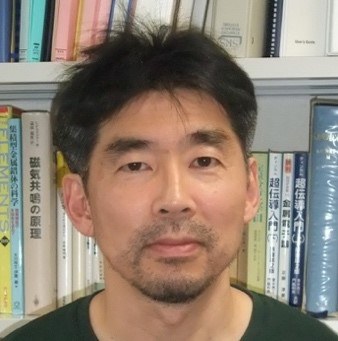Multiple Superconducting Phases in UTe2: A Complex Analogy to Superfluid Phases of 3He
Advanced Science Research Center, Japan Atomic Energy Agency
© The Physical Society of Japan
This article is on
Multiple Superconducting Phases and Unusual Enhancement of the Upper Critical Field in UTe2
J. Phys. Soc. Jpn. 89, 053705 (2020).
In quantum liquids, large differences are observed owing to differences in quantum statistics. The physical properties of liquid 3He (Fermion) and 4He (Boson) are considerably different at low temperatures. After the discovery of superconductivity in electron (i.e., Fermion) systems, a similar pairing ordered state was expected for 3He. Remarkably, the observed ordered state of 3He was more surprising than expected, multiple superfluid phases in the T–P phase diagram. The origin of the multiple phases was attributed to ferromagnetic interactions in the p-wave symmetry state.
In contrast to neutral 3He, no superconductor with multiple superconducting phases was observed in electron (i.e., charged) systems for a long time, partially because common superconductors have an s-wave pairing state, while odd-parity pairing superconductors are rare. In 1984, the first example was observed in a heavy-fermion superconductor, UPt3, which has three different superconducting phases in the H–T phase diagram. This compound could be the first example of an f-wave superconductor. Recently, superconductivity at Tc = 1.5 K was discovered in ferromagnetic UTe2. As the upper critical field Hc2 exceeds the Pauli limit, a spin-triplet state with ferromagnetic interactions and thus multiple superconducting phases were expected for this compound, although no multiple phases were confirmed at ambient pressure.
In a JPSJ letter, Aoki et al. reported the confirmation of multiple superconducting phases of UTe2 in the T–P phase diagram (Fig. 1). Based on a careful study under varying fields and pressures, at least four different superconducting phases were reported.
This fascinating discovery of multiple superconducting phases has triggered a new wave of research on quantum liquids. The analogy between multiple superconducting phases of UTe2 and superfluid phases of 3He is an exciting unification of charged and neutral quantum liquids.

Fig. 1 T–P phase diagram of UTe2. The origin of the broken line has not been identified. Thus, multiple phases could not be confirmed at P = 0. Fourth superconducting phase (SC4) appears under field. MO is probably a magnetically ordered state.
However, in contrast to 3He, new features of UTe2 reflect the particularities of charged quantum liquids. The superconducting pairing appears to be sensitive to applied magnetic fields and pressures through a possible modification of the Fermi surface topology. In addition, competition between ferromagnetic and antiferromagnetic interactions could exist, which depend on the field and pressure. Theoretically, the importance of electron–electron correlations and spin–orbit coupling is emphasized.
Considering these aspects, UTe2 is a more complex system than the superfluid phases of 3He. Particularly, UTe2 may be the first topologically protected odd-parity superconductor, which is not only exciting in fundamental physics, but also useful for applications in quantum computing. This compound is a fascinating new exotic superconductor, perhaps with odd-parity pairing.
Multiple Superconducting Phases and Unusual Enhancement of the Upper Critical Field in UTe2
J. Phys. Soc. Jpn. 89, 053705 (2020).

